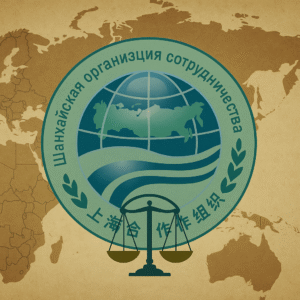Time to Act Now or Never: Beyond South Asia, Cost of Climate Inaction
South Asia is home to nearly two billion people and is heavily struck by the climate crisis. There have been record-breaking heat waves, glacial floods, unpredictable monsoons, and rising sea levels, creating havoc in the region. South Asian governments are nowhere near taking this seriously and are significantly behind the curve. Their lack of action is not only going to harm the nations domestically in the form of floods and natural disasters, but will create capacity for future global tensions, an unstable economy, and, later on, mass migrations. The Increasing Climate crisis in South Asia is not an all-of-a-sudden phenomenon; it is a build-up of the absence of proper climate frameworks and mitigation strategies in South Asia. Despite the existence of treaties and agreements. The governments fail to practically abide by the agreements and prioritize this matter; instead, they rely on producing flattery statements rather than actions. It is time to realize that this is not just an environmental problem; it has consequences beyond borders.
The impact of climate change in the region is devastating. In 2014, Bangladesh experienced an extreme heat wave with temperatures reaching 43.8 degrees Celsius, which caused the government to close schools and exposed tens of millions of children’s health to risk (Dialogue Earth). Later on in the same year, heavy floods struck across India and Pakistan, killing more than 557 people, and in 2022, heavy floods in Pakistan took more than 1300 lives. According to the Intergovernmental Panel on related damages and regional estimates alone, India would face a decrease of 24.7% in GDP by 2070, causing an immense economic fallout. Nations like Bangladesh and Pakistan face similar issues, adding to a collective decrease of 41% by 2070 in the region, such as threats to infrastructure and food production.
Governments still failed to implement substantial climate mitigation and adaptation strategies despite the existential warnings. The National Climate Change Policy was adopted in Pakistan in 2012, but this has largely remained on paper. In 2015, a landmark court case in Pakistan, Asghar Leghari v. Federation of Pakistan, forced the government to make a climate commission. Provincial implementation is yet to come. 41% of Funds allocated for climate in Sindh were spent over 16 years, whereas some institutions failed to allocate funds at all. Bangladesh and India have national frameworks, but remain highly stalled. Due to the political manifesto during the election, the climate remains overshadowed by identity politics and economic populism (Asia Society).
Moreover, South Asia’s virtual communication and coordination remains nonexistent. In-fact, due to regional conflicts, the South Asian Association for Regional Cooperation has been inactive since 2014. It was once envisioned as a platform for disaster planning and regional diplomacy. As a result, South Asian countries come to the global climate summits like COP and fail to put forward a unified regional voice. This shows weak negotiating power and climate financing delays.
Every South Asian country is a signatory to the Paris Agreement, and nations like India have pledged that by 2070, they will reach net-zero emissions. In contrast, these pledges remain in the air and lack any funding to make them a reality. There is a huge gap between the climate statements and the regional implementation. India’s recent act in May 2025 of putting the Indus Water Treaty into abeyance has increased geopolitical tensions, especially with Pakistan, which has added another layer to climate tensions. This action has turned a National security issue rather than just a water scarcity problem.
There are broader implications of climate inaction; increasing temperature and excessive flooding have already displaced millions of people from their homes. It is reported that if the warming remains unabated, there is a high possibility that 60 million people will be climate migrants by 2050. This mass displacement could create a refugee crisis and strain global resources, causing instability. In the cities, migration of people from rural to urban areas due to climate disasters is a strain on the job market, sanitation, and housing capacity, leading to further socioeconomic unrest and tensions. The analysts are already predicting that migration brought on by climate change will grow into a hot spot in cities. In the end, this would result in intense political division and intercommunal warfare in the impacted area, which would also cause havoc on a global scale.
From the perspective of the changing climate, South Asia is an area that is particularly vulnerable. Even more concerning is the fact that this area is not well-prepared for situations like these. National borders would not encompass the inaction. The developing Asia by 2070, has warned that by 2070, developing Asia’s GDP could drop by 17%, which would cause supply chain and international market disruptions. According to the World Bank. 60% of South Asian households have already been impacted by climate-related shocks in the last five years, and the situation is predicted to get worse in the years to come. Without quick response, the area would turn into a hotbed of conflict, economic hardship, and displacement; worse, it would have global repercussions in addition to regional ones.
The moment has come for a drastic change from lofty promises to action. Governments in South Asia should examine current policies and act to execute them, including updating funding for climate adaptation initiatives, economic planning, and including climate resilience into election platforms. SAARC or another framework should be used to restore regional cooperation, with an emphasis on climate, shared water resources, and disaster forecasting. Developed nations should offer concrete assistance for climate action in the form of grant-based money, going above and beyond the traditional commitments. Damage money and an adaptive basis should be used to offer this funding. Since the climate issue is not just a regional issue but a global one with significant global ramifications, South Asia cannot be left to fight it alone.
South Asia’s climate crisis is not a worry for the future. Now that it is unraveling, the world needs to take it seriously. The stability of the entire world is at stake, not just their country, if the regional governments keep their eyes closed. The worldwide ramifications would be more severe the longer action was delayed.



